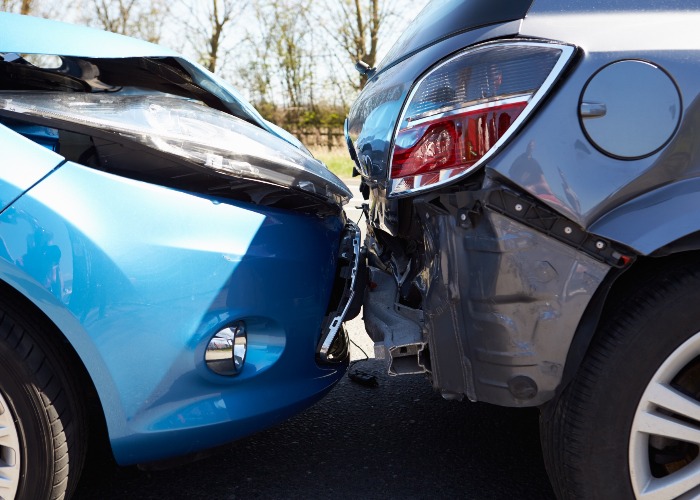Car crash conmen craze

Fraudsters are now demanding cash on the spot according to insurers.
Crash-for-cash is a relatively well-known scam, in which a fraudster will slam on their brakes unexpectedly, causing the car behind to collide with them.
Some remove or disable their brake lights so that other drivers have no warning or chance to react. They'll then make an insurance claim that exaggerates the damage caused to their vehicle so that they can get more money.
But there's a new variation on the scam, according to insurers, with some fraudsters demanding cash on the spot from the other driver following the crash.
Generally, this will be for a sum between £50 and £200.
Targeting the vulnerable
Tom Gardiner, head of fraud at Aviva, told the Mail: “Although it is early days, we are seeing anecdotal evidence of fraudsters deliberately causing an accident and then pressuring the target – or ‘at fault’ party – into paying them money in exchange for not making an insurance claim.”
“We are concerned that fraudsters could end up targeting the most vulnerable motorists – the elderly, young drivers and women who are travelling alone or with young children.”
Mr Gardiner described the new trend of demanding on-the-spot payments as “bringing back the days of ‘highway robbery’”. Motorists were being intimidated, he said, and felt like they had no choice but to comply.
One reported incident even involved the scammer offering a motorist a lift to a cash machine so that they could withdraw cash.
Save money on your car insurance with loveMONEY
Don't pay!
Scammers are likely to make their fraudulent claim regardless of any cash exchanged at the scene, as this will increase the amount of money they receive.
So if you pay up on the spot, you’re only increasing their profits. You may also be encouraging the scammer to repeat the tactic elsewhere, putting more drivers in harm’s way.
What to do if you’re involved in a car crash
If you’re involved in a car crash, alarm bells should start ringing if the other driver seems unusually calm and has their insurance details already written down for you to take.
Keep a cool head. Don’t hand over any money, don’t admit fault, and write down as much personal information as possible. Their name, address, and contact telephone number is a good start, if they’ll give you that information.
Don’t forget to also write down the make, model and registration number of their car too. Take photographs if possible, from as many angles as you can.
You should also make a note of the number of people in their vehicle (and take a photograph for proof) – some scammers may later claim for injuries to passengers who weren’t actually present at the time.
As a matter of precaution, you might also want to install a dashcam in your vehicle. Some insurers are now accepting dashcam footage as evidence, and this may provide proof that an accident was caused deliberately by the car in front.
Read Insurers accepting dashcam footage in car insurance claims.
What to do after a suspected scam crash
If you think you’ve been targeted by a crash-for-cash scam, call the Insurance Fraud Bureau’s Cheatline on 0800 422 0421. This is a free and confidential way to report suspected insurance fraud, and your information could help the IFB build cases against organised criminal enterprises.
You should also call the police to report your suspicions.
Save money on your car insurance with loveMONEY
More on motoring and travel
Supermarkets slash fuel prices
Could your car be caught up in the VW scandal?
Millions of motorists to 'pay thousands' to drive into cities
Comments
Be the first to comment
Do you want to comment on this article? You need to be signed in for this feature